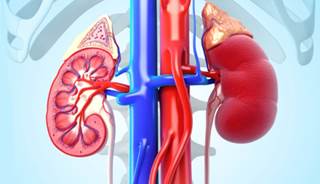Search for dialysis centres here
 Log in to explore the world's most comprehensive database of dialysis centres for free!
Log in to explore the world's most comprehensive database of dialysis centres for free!
| Donor Kidneys Usable Despite Acute Kidney Injury - Renal and Urology News |
 |
 |
May 04, 2015
 Recipients of AKI kidneys have patient and graft survival rates similar to those of recipients of non-AKI kidneys. PHILADELPHIA—Transplanted kidneys from deceased donors with acute kidney injury (AKI)are associated with patient and graft survival rates similar to those of non-AKI deceased-donor kidneys, according to study findings presented at the 2015 American Transplant Congress. Carlo B. Ramirez, MD, of Thomas Jefferson University Hospital in Philadelphia, and colleagues compared outcomes from 65 transplanted kidneys from a donor with AKI with the transplant outcomes of 62 expanded criteria donor (ECD) kidneys and 270 standard criteria donor (SCD) kidneys. The researchers defined AKI as a donor terminal creatinine level of 2 mg/dL or higher. The 6-month and 1- and 3-year patient survival rates were 98.5%, 96.8%, and 92% in the AKI group, 98.1%, 97%, and 93.4% in the SCD group, and 98.4%, 93.2%, and 77.7% in the ECD group, respectively. The 6-month and 1- and 3-year death-censored graft survival rates were 96.9%, 96.9%, and 96.9% in the AKI group, 97.7%, 96.5%, and 91.8% in the SCD group, 95.1%, 93.2%, and 90.1% in the ECD group, respectively. In addition, results showed that AKI kidneys are associated with a higher risk of delayed graft function (DGF) than non-AKI kidneys (58.5% vs. 41.5%) as well as longer cold ischemia time (857.79 vs. 589.32 minutes) and younger donor age (32.25 vs. 40.65 years). “Elevated terminal donor creatinine is not a risk factor for graft loss after deceased donor kidney transplantation,” Dr. Ramirez's group stated in a poster presentation. Dr. Ramirez told Renal & Urology News that kidney grafts from donors with elevated creatinine due to AKI—with acceptable biopsy results and machine perfusion pump parameters—may be transplanted safely with outcomes similar to those associated with non-AKI kidneys. “The use of these kidneys may help decrease the high discard rates for this type of kidneys that are already in short supply,” Dr. Ramirez said. In another study presented at the meeting, researchers at New York-Presbyterian/Weill Cornell Medical College in New York led by Meredith J. Aull, PharmD, also demonstrated that transplantation of kidneys from deceased donors with AKI is associated with death-censored graft survival rates similar to those of non-AKI kidneys, but with an increased risk of DGF. Dr. Aull's group examined outcomes from 688 deceased donor kidney transplants. They defined AKI as a terminal donor creatinine level of 2.0 mg/dL or higher. The researchers broke donors down into 4 groups: (1) ECD with a terminal creatinine level below 2 mg/dL; (2) ECD with a terminal creatinine level of 2 mg/mL or higher; (3) SCD with a terminal creatinine level below 2 mg/dL; and (4) SCD with a terminal creatinine level of 2 mg/dL or higher. The 3-year death-censored graft survival rates were similar among groups 1–4: 83.3%, 79%, 88.6%, and 87.4%, respectively. DGF rates were 50% and 37.8% in groups 2 and 4 (the AKI groups), respectively, compared with 40.7% and 27.9% in groups 1 and 3 (the non-AKI groups), Dr. Aull's group reported. In a poster presentation, the researchers stated that use of deceased-donor organs with AKI is associated with a similar incidence of DGF when compared within ECD and SCD donor types, and the duration of DGF is similar (5–6 days). “Kidneys from donors with AKI appear to be an important resource for the transplant community that is not fully maximized, given the high discard rates,” they concluded. |
 Professional dialysis recruitment
Professional dialysis recruitment
